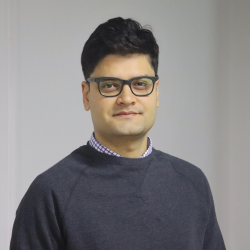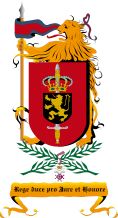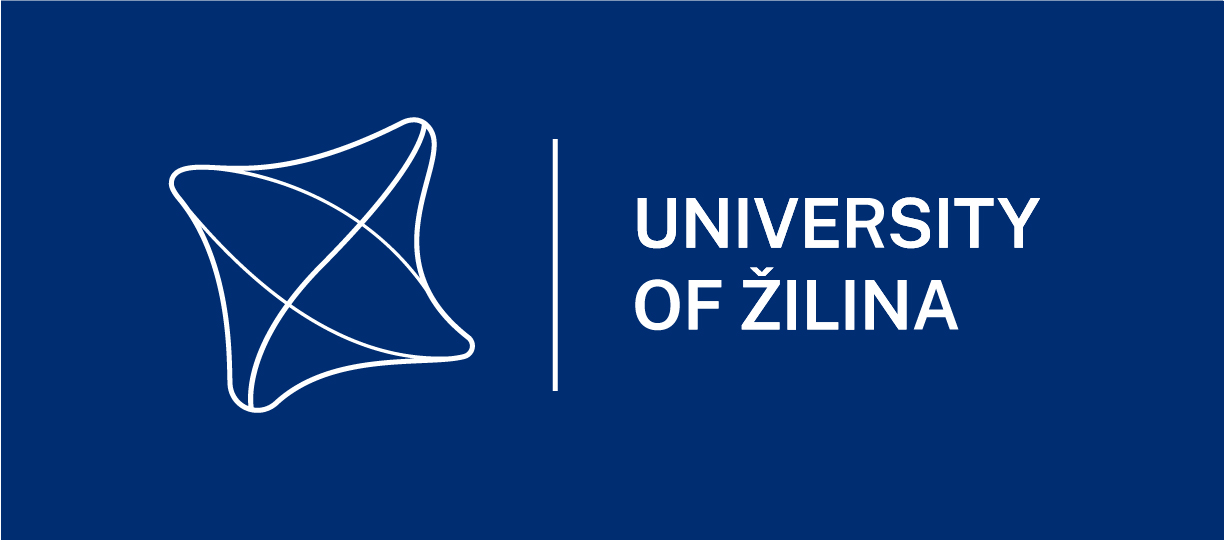Keynotes
Towards Adaptive Extrusion-based 3D Printing of complex food systems
Abstract
Extrusion-based 3D printing has been applied to obtain interesting food products which can be customized in terms of appearance, texture and even nutritional content. Most studies in extrusion-based food printing focuses on the printing of single-component or binary systems at room temperature. The printing of complex food systems has however not been intensively studied. Studying the printing of complex food systems could contribute to the future development of personalized nutrition. In addition, the current system shows low adaptability to the complexity in food systems. To optimize the printing conditions of a new material, trial-and-error approach is often applied which is time-consuming. Improving the adaptability of the extrusion system will ensure precise dosing and smooth extrusion of complex food materials, which will ultimately benefit the stability and quality of printed foods. In our lab, we are developing an adaptive extrusion 3D printing system for the printing of complex food materials with high accuracy and quality. Sensors such as cameras will be incorporated in the extrusion system to collect data for the evaluation of extrusion performance. Data-driven predictive models will be developed to link the output printing quality to input parameters such as printing conditions and properties of food materials. The knowledge gained will help to avoid trial-and-error approaches for formulation development and process optimization in extrusion-based food printing.
Short Biography
Dr. Lu Zhang is assistant professor on additive food assembly at the Laboratory of Food Process Engineering at Wageningen University in the Netherlands. Her research interests include complex food systems, 3D food printing and material science. She and her team conduct research to advance the food printing technology for the personalization of healthy and tasty foods, by developing machine-learning predictive models to describe behaviours of complex food systems during printing and designing control strategies to adapt the printer to changes in food materials' properties. Lu received her PhD degree at Wageningen University in 2018. She investigated bioactive ingredients during mini-bread baking. She studied chemical engineering for her BSc and MSc degrees at Xiamen University in China. She is an active member of Digital Food Processing Initiative (DFPI).
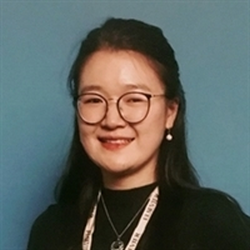
AFSG: Wageningen University & Research
Laboratory of Food Process Engineering
Wageningen, The Netherlands
Science Fiction versus Reality
Abstract
Many ideas from science fiction books, originated from the phantasy of authors, have been realised years later. Science fiction goes beyond reality but has its roots in current reality. In his books on travels around the world, Jules Verne introduced the reader in a phantasy world, but many ideas have been realised years later. George Orwell wrote a book in 1949 with his vison of the world on 1984. His ideas about “Big brother is watching you” has been realised recently by using smart surveillance cameras. Designers of computer games are sometimes surprised by the performance of their characters. They show sometimes behaviour not expected by the designers.
In our presentation we discuss these examples in more detail. We will give some characteristics of successful science fiction stories. Next we will discuss what makes science fiction attractive at least for some people. Finally we will report about the backside of science fiction, about the dangers. In a time of fake news, some people present fiction as reality. The problem is that some people mix up fiction and reality and create their own reality. We report about special fraud in science. Some scientist present their ideas, fictive and faked experiments as reality. Finally we discuss our investigations about the psychological grounding of science fiction.
Short Biography
Leon Rothkrantz studied Mathematics at the University of Utrecht. After his PhD defense at the University of Amsterdam, he completed a second study in Psychology at the University of Leiden. In 1980 he was appointed at the Technical University of Delft. His research topics was Artificial Intelligence with a focus on modelling human brain and multimodal communication. In 1999 he was appointed as Associate Professor at TUDelft and headed the group of Knowledge Based Systems. In 2008 he was appointed as Professor in Smart sensor systems at The Netherlands Defense Academy. In 2015 he was awarded with a degree of Doctor honoris cause from the Czech Technical University in Prague and since 2013 he is visiting Professor at that University at the Faculty of Transportation Sciences.
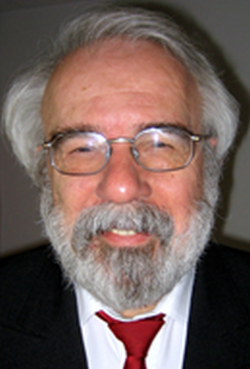
Czech Technical University
Prague, Czech Republic
A Multi-Agent Model Approach to fill up the Gap between Emotion, Psychological and Brain Computing
Abstract
Deep learning and artificial neural networks are used to simulate synapses and recognition features of brain perception. However, they do not take into account, the dynamic, the plasticity and the diversity of the inter-neuron local communication: electrical, chemical and paracrine synapses. Moreover, these models do not implement the glia that conveys long distance hormonal messages that interact with neurons and make them available everywhere in the whole body at the same time. These internal hormonal messages strongly influence the state and the behavior of all the brain layers and nuclei (fear, emotions, sleeping and awakening). We have shown in our previous article that these hormonal messages are essential to consciousness and thinking.
We know that the nervous system is always evolving and that this evolution is necessary to achieve long term memory, cognitive, sensitive, motor and language tasks. We have also described the features of the object oriented subsymbolic perception pyramid and those of the object oriented linguistic pyramid. In this work we provide a junctions object library to implement the different type of synapses and hormonal messages and a multi-agent system that integrates and control them. The supervisor agent represents anatomical and connection constraints of the brain layer and nuclei and control the diffusion of hormones and neuromediators. The temporal fuzzy vector space (TFVS) is used to tune the composition of neuron objects in layers and nuclei objects and to implement the emergence of their states and features according to a holistic systemic approach. We present the necessary tools and TFVS object classes to implement the MAS subsymbolic perceptive and psychological layers. To illustrate the approach we propose a simulation of object perception and recognition, emotion tagging, indexation to store the cognitive experience corresponding to a set of threatening objects in the environment.
Short Biography
Joël Colloc earned his M.D. at the medical faculty of Lyon and a specialty degree of forensic medicine with a degree of clinical toxicology. He received a MSc. degree of IT from the Business School of Lyon (IAE) and a MSc. degree of computer sciences from the engineering school INSA of Lyon. He served as forensic physician at the Edouard Herriot Hospital in the neurological emergency department to cure drug addicted people, medical ethics and developed drug and addiction database. He went on to earn his Ph.D. in computer sciences at the INSA of Lyon.
As Hospital assistant at the laboratory of medical computer science and he taught IT at the medical faculty. He was elected as associate professor in computer sciences at IAE of Lyon and he earned his accreditation to supervise researches in sciences at the Lyon 1 University. He is a Le Havre Normandy University professor in computer sciences since 2003.
His main research topics concern e-health and particularly: fuzzy vectorial spaces (FVS), multi-agent clinical decision support systems (MADSS) and knowledge bases, Case Based Reasoning, ontologies, nervous system modeling and cognitive sciences and AI applications in medicine and human sciences.
His human sciences researches try to conciliate the ethics of using Big Data in epidemiological studies, autonomous systems and robots and keeping ethics use of AI in order to improve clinical decision in medicine while preserving the patient-caregiver relationship, the privacy and the freewill choice of the patients.
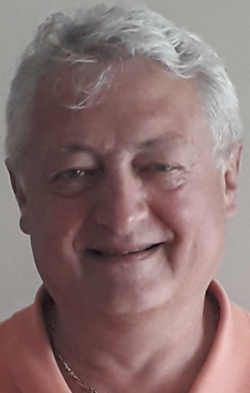
Université of Le Havre
Le Havre,France

How Advances in Machine Learning Change the Way we grow Food
Abstract
Today, the farming industry is under pressure. Its two main pillars, labor and chemicals, are affected by profound regulatory and demographic trends, leading production costs to skyrocket. Fields such as machine learning and robotics are now being leveraged by entrepreneurs around the world to solve this contemporary farming equation. We'll dive into the role of machine learning in the context of farming automation, its current limitations and potential for the future.
Short Biography
After earning a master's degree in Applied Mathematics & Computer Science from Ecole Polytechnique in France, Arnaud Delaunay became the Co-founder and CTO at Tiresio. The retail tech company develops a system that turns any online images shoppable by automatically identifying products and linking them to their retailers. Later on, he created the Data & Machine Learning (ML) team for a French consulting firm called Linkvalue and developed ML products in various industries including fraud detection in insurance, bids optimization in travel, and document recognition in real estate. Convinced by the fact that ML can play a major role to solve the sustainability issues our world is currently facing, he joined FarmWise as a Machine Learning Engineer in the Computer Vision Team in Paris. Arnaud works on making crop image recognition models more efficient.
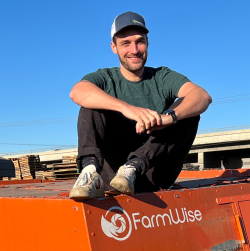
Computer Vision Team
FarmWise
Paris, France

The Rise of "Artificial Engineers" in the Manufacturing Industry
Abstract
Metals have been the backbone of many industries for several centuries now. Processing and production of metals are very energy-intensive. As the world becomes more environmentally cautious, many countries are taking steps to reduce their fossil-energy consumption. China, the largest supplier of industrial metals, has announced new regulations that cap the production of several key metals. The increasing demand and the fear of shortage in the coming years have been driving prices higher. Aluminum prices have surged by 60% in the last year while magnesium is 155% more expensive than this time last year. Reinforced thermoplastics are among more sustainable alternatives that offer weight-saving, reduced carbon footprint and even lower cost. However, this category of materials is notorious for being too complex to be simulated using conventional predictive engineering methods. Current state-of-the-art methods are computationally expensive and cannot be employed within industrial timeframes. In this talk, I discuss the application of AI and machine learning in speeding up the process. Future technologies such as GPU computing, voxel-based simulations and V-net architectures are also briefly previewed.
Short Biography
At the age of 21, Alireza Yaghoubi started his career as a materials scientist, developing applications for nanomaterials in green energy, high-performance ceramics and biomedical implants. His scientific works have appeared on the front cover of leading journals such as those of Royal Society of Chemistry, as well as being featured in news articles in 15 countries by the likes of Science Daily and MedicalXpress. Alireza is also an award-winning designer and co-founder of AirGo Design, a Singapore-based company developing "The Future of Airline Seating" according to ABC News, USA Today, Reuters and The Economist. Alireza is currently leading the work on an AI-assisted platform for designing lightweight structural components.
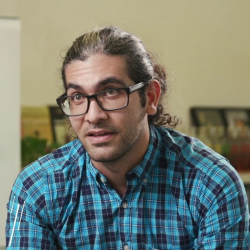
Chief Technology Officer
AirGo Design, Singapore
How New Technologies increase Engineering Complexity and what to do about It...
Abstract
Looking at novel technologies that step-by-step are coming into our lives, we can be impressed by the results, by the possibilities new products offer, and by the way they slowly change our lives as well. These networked technologies are often communicating continuously with other systems and have a certain degree of autonomy for taking decisions. Such “Cyber Physical Systems” (CPS), with sometimes the human in the loop, pose real challenges to industries. Looking from a systems design point of view, such new technologies tend to increase the complexity a designer or an engineer needs to manage. Characterised by multiplicity, by interdependence, by a certain degree of heterogeneity, with continuous interactions, and overall with a product or system behaviour that is difficult to predict, such systems, such systems are also difficult to validate. And, if it concerns safety-critical embedded systems, to get those systems certified. Still, this is a road that is taken, and when looking for example at autonomous vehicles of autonomous drones, such technologies are being considered, so to be able to cover the stakeholder requirements, or more in general the expectations from our society. So, what to do about them… This presentation aims at analysing the challenges and to propose a methodology to support the design process. Starting from a new value-based approach to system design and engineering, research directions are suggested for the coming year, so to be able to prepare the future.
Short Biography
Rob Vingerhoeds is Professor of Systems Engineering and Head of the Complex Systems Engineering Department at ISAE-SUPAERO, Universit´e de Toulouse, France. An Aerospace Engineer from Delft University of Technology, Rob holds a PhD in Applied Sciences from the University of Ghent, as well as a "Habilitation à Diriger des Recherches" from INP Toulouse. Systems engineering is a key topic in Rob’s career since the early beginnings, with a particular focus on real-time intelligent systems. His current research focusses on systems engineering for concept design, model-based systems engineering, and predictive maintenance for complex systems. Besides research and lecturing, Rob has substantial industrial experience in these areas. Rob was for 10 years Editor-in-Chief of the IFAC Journal "Engineering Applications of Artificial Intelligence", and is currently Deputy Editor of the INCOSE Journal "Systems Engineering". He is a Fellow of the Institution of Engineering and Technology and of the British Computer Society.

ISAE-SUPAERO
Toulouse, France

Building an Autonomous Racing Car
Abstract
Autonomous racing a thing of the future or reality? This talk will cover the story of a few students who started a project that has grown to a team of more than 80 students. The goal of this team is to build a fully autonomous race car and partake in international competitions. The team consits of 8 divisions working on their specific goals and tasks. However, those 8 divisions still forms 1 team working on the same car. The team is supported by top companies like Proximus, Jaguar, Unilin and more. The ambitions of the team are clear, building the first self driving race car in Belguim and partaking in international competitions. However, it does not stop there. The team also focusses on aspects like innovation, sustainability and diversity.
Short History
UGent Racing is a recently founded team which started with only a few students. After the first infosession to the students of the University, the team boomed tremendously. Thanks to the many enthousiastic and passionate students, the team was able to realize their first electric race car in just a few months and limited budgets. This sparked the interest of various sponsors like Proximus, Jaguar, IDLab and Unilin Group. The additional funding has lifted the ambitions of the team even higher. They are working hard on the second generation race car which will be fully autonomous.

Letting Robots Imagine
Abstract
Imagination is a defining sign of intelligence in humans; our creativity finds its basis in imagination, as humans we imagine about our future and plan for it accordingly in the present. The question arises; can we mimic this behavior in artificial intelligence systems? Can machines perform their tasks and imagine about their possible mistakes in future and work towards avoiding them? Let’s take an example: an autonomous car can be trained with millions of data samples taken from real life, however, how many of these samples include real accidents? In terms of safety, all real-life datasets are sparse. To solve this issue, we can employ generative learning for letting the robot generate scenarios which are safety critical, as a next step they can be trained appropriately to avoid them. This may seem like science fiction, but it is possible at the current moment of time. The AI Applications team at IDLab-UAntwerp is working on this idea to bring faster and safer solutions to industries including smart mobility, chemical sector, and sustainable building management systems. We let the robots plan for future and imagine about unsafe scenarios while they rest.
Short Biography
Ali Anwar is a principal research fellow at Faculty of Applied Engineering, University of Antwerp. He is also working as a senior researcher with IDLab; a research group consisting of teams at imec, University of Antwerp and University of Ghent. He leads the team of vision-based planning systems at IDLab. His research interests lie at the intersection of control engineering, computer vision and artificial intelligence. He is passionate about bringing AI to real world and making it generalizable, sample efficient and safe. He holds a PhD in control sciences and engineering from Harbin Institute of Technology and he actively serves as a reviewer in international peer reviewed conferences and journals including, IEEE Annual Conference on Industrial Electronics, IEEE Transactions on Industrial Electronics and IEEE Transactions on Industrial Informatics.
DESIGN FICTIONS: Speculation, innovation and “worlding” through architectural design
Abstract
Architecture has a long-established relationship with science fiction, the conjuring of future possible worlds. This presentation explores how architectural agendas are an important innovation space for these troubled times, as they can bring society together through emerging knowledge and practices to co-create a shared, liveable future. Fundamentally innovative and interdisciplinary, architecture has a broader capacity to disrupt the status quo by proposing new paradigms and relationships to frame how we live. Imagining the possibilities within a choreography of space, time, matter, along with appropriate modes of inhabitation, the practice of the built environment that forms the applied aspect of architecture, has the option to realise these proposals in practical terms through the construction of our homes and cities, setting the stage for new paradigms of inhabitation. The escalating climate crisis has compelled architectural designers to re-imagine the kinds of architecture that help us engage with 21st century challenges and prototyping new protocols for world-making. Alternative perspectives for reimagining and working beyond anthropocentrism are difficult to develop yet urgently needed, so that unconventional and presently, inaccessible aspects of our world can be enfolded into our worlding processes as alternative ontological frameworks. If we are to escape the binary traps, hierarchies, and silos within our present logic, then we must develop knowledge that links us with other kinds of bodies so we can forge productive relationships that reconfigure and strengthen our ecological networks. This is as equally important to the sciences as it is to arts, the humanities, and design. Constituting agile knowledge-making toolsets the “worlding experiments” proposed in this presentation are not proposals for new Utopias but enable our present Babel to thrive and adapt to rapidly changing circumstances so that we can collectively remake the world together in many different ways.
Short Biography
to be added
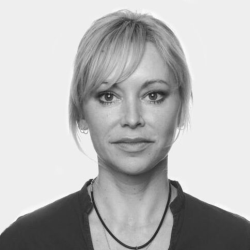
Professor of Regenerative Architecture
Faculty of Architecture | Department of Architecture
Campus Sint-Lucas, Ghent/Brussels, Belgium

